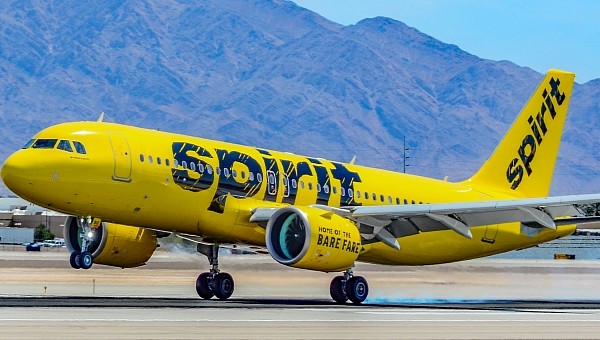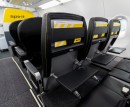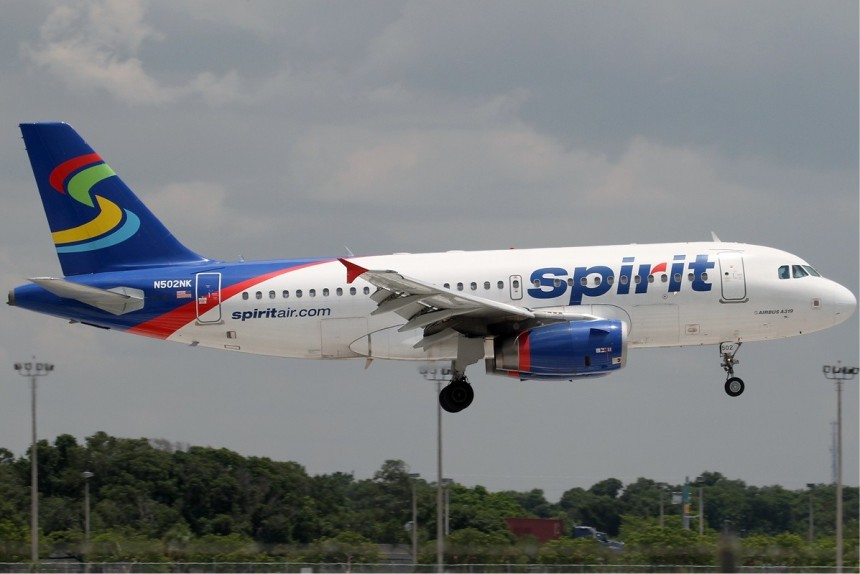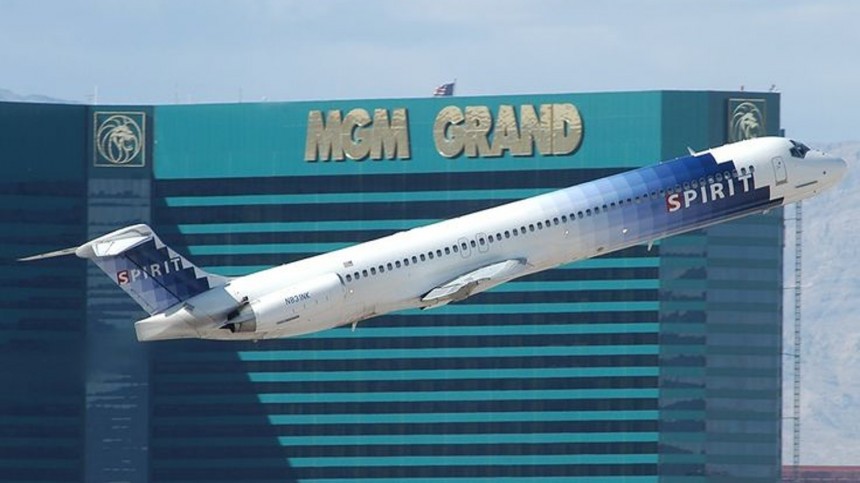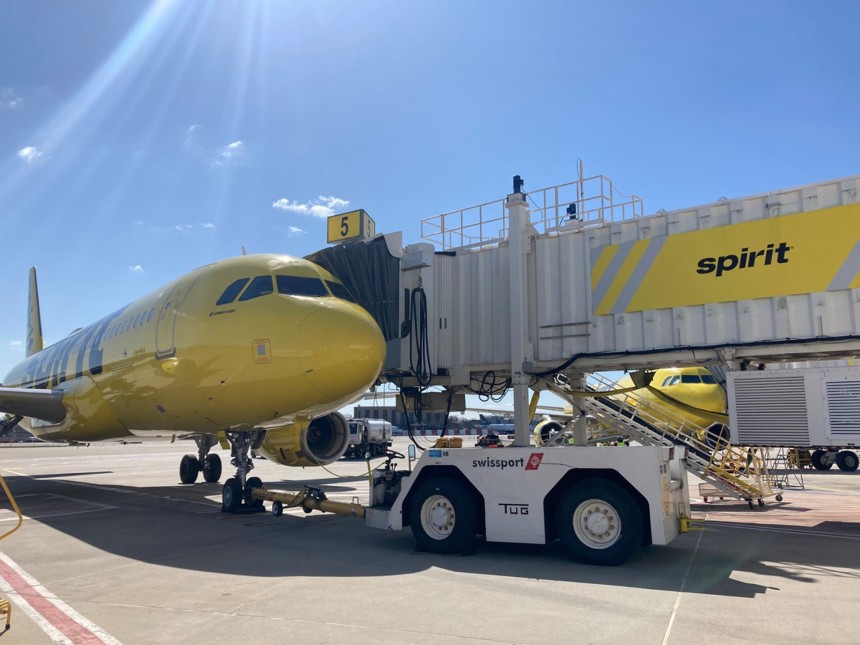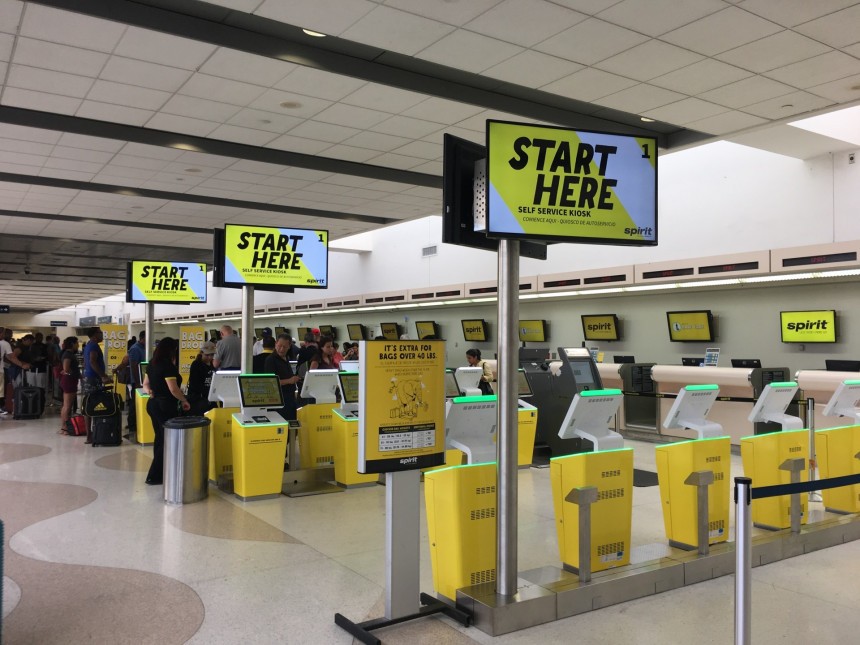It's foolish to pick sides between big corporations that don't know you exist. But in the North American airliner space, it's not hard to find things to dislike about Spirit Airlines. As an ambassador for poor relations between company and customer, Spirit's brand is among the most prolific on the continent.
But it wasn't always this way. At one point in the distant past, the company that'd become Spirit Airlines didn't operate any aircraft. That's right, the most controversial and polarizing civil airliner in American history got its start not in the aviation space but rather in long-haul trucking service. This is the story of Spirit, the bright yellow air taxi of the American civil airline sector.
Short-term profits in the trucking industry alone may have been acceptable for less ambitious transport companies. But after nearly 20 years of servicing nothing but over-the-road cargo service, Clippert Trucking decided a new focus was needed to keep the company relevant in a modern economy; a focus on commercial aviation.
This process began in 1983 as the company slowly transitioned away from trucking and focused on destination-based air travel packages flying to and from cities with a heavy emphasis on entertainment and gambling. Operating out of Detroit, Michigan, under the new name Charter One Airlines, Las Vegas and Atlantic City were two of the new airline's most prominent destinations.
Soon, Northeastern cities like Boston and Providence, Rhode Island, were added to the fledgling airline's itinerary. These routes became real money-makers for the company, which by this point was only operating small, regional turboprop airliners. But this paradigm would change when Charter One purchased a fleet of pre-owned McDonnell Douglas DC-9 and MD-80 jetliners in 1992. With these acquisitions, Charter One completed its transition into Spirit Airlines.
The way this was achieved could be seen as a genius from a strictly profit-driven perspective but completely diabolical for the average consumer. By the mid-2000s and under CEO Ben Baldanza, Spirit adopted a strategy by which common amenities travelers expect to be included in the ticket price, like free baggage check-in and boarding pass printing, was removed from the base ticket price.
These items can then be charged back to the customer at a slightly more inflated price than if these were integrated into the ticket's base price like almost every other domestic airline. Many industry critics lay the blame for this controversial business model at the hands of Spirit's primary holding company, a venture-capital firm called Indigo Partners. With Ben Baldanza serving as the company's mouthpiece, Spirit's CEO for the next decade upped fees and crammed as many seats into his airliners as possible.
Before long, Spirit was turning a profit, and not a paltry one either. The British Frontier Magazine once estimated this auxiliary income for Spirit, independent of the base ticket price, accounts for 40 percent of the airline's entire revenue stream. By 2019, that revenue stream generated as much as $3.8 billion in turnover and $335 million in pure net profits. Everything from carry-on luggage to gate-checked luggage to priority boarding and even in-flight beverages/snacks became the equivalent of real-life video game DLC.
As Spirit Airlines gradually replaced its aging McDonnell Douglas fleet with various models Airbus A320 family, the company would see its domestic influence reach nationwide status. This comprehensive fleet refresh led to Spirit Airlines' most positive attribute. Not a single Spirit aircraft has ever been involved in a fatal accident in over three decades of operations.
Not that people didn't complain about the seating layout inside these new airliners. Frequent cheap but not-so-cheerful airfares have led many Spirit Airline flights to resemble a cramped city train more than an airline. Cramped economy-class seats from nose to tail on every Spirit flight further aid in this illusion. Frequent TikTok and YouTube videos showing the more "quirky" and "eccentric" characters that find their way onto Spirit flights are undoubtedly interesting entertainment sources.
That often means making concessions in service quality American consumers are trained to reject. But then again, we might only have to put up with it for a little while longer. All thanks to intervention from a low-cost airline with the opposite reputation of Spirits'. When Jet Blue agreed to purchase $3.6 billion worth of Spirit stock at roughly $33 bucks per share in July 2022, it signaled a culture shift might be imminent for Spirit shortly.
Should the U.S. DOJ's Antitrust Division approve the sale, the merger between the highest-rated and worst-rated, low-cost airlines from a customer satisfaction perspective should commence in 2024. By 2025, the two parties intend to operate in conjunction under a common banner of a yet-to-be-determined moniker. How well the respective operating styles of JetBlue and Spirit will meld should the deal go through is anyone's guess.
For the moment, the federal government has yet to make a decisive statement on the matter, leaving the future of one of the most hated corporate brands in the Americas very much up in the air. Ultimately, the biggest question surrounding the legacy of Spirit Airlines is deciding whether their business practices blatantly took advantage of working-class Americans at a time when they were arguably their most vulnerable in a century.
We live in an era where choosing an airline is less of a matter of which you prefer the most. Rather, it's a decision of which carrier will make you grit your teeth and spike your blood pressure the least. Compared to the days of TWA and Pan Am, the airliner sector's traveled down a dark road in the last 30 years. Spirit Airlines is that notion's most glaring focal point.
From humble beginnings, it all went wrong
Founded in 1964 as Clippert Trucking Company by a Michigan native Ned Homfeld, what would become Spirit Airlines started with simple intentions. The mid-1960s heralded the arrival of the golden age of American trucking. An era where money was aplenty, and chisel-jawed, battle-hardened men and women forwent sleep for chain-smoking cartons of cigarettes and fudging travel time books to make their deliveries that little bit faster.Short-term profits in the trucking industry alone may have been acceptable for less ambitious transport companies. But after nearly 20 years of servicing nothing but over-the-road cargo service, Clippert Trucking decided a new focus was needed to keep the company relevant in a modern economy; a focus on commercial aviation.
This process began in 1983 as the company slowly transitioned away from trucking and focused on destination-based air travel packages flying to and from cities with a heavy emphasis on entertainment and gambling. Operating out of Detroit, Michigan, under the new name Charter One Airlines, Las Vegas and Atlantic City were two of the new airline's most prominent destinations.
From the roads to the skies
Only then, nearly 30 years after its humble beginning, the company took the form we're all familiar with today. But a scrappy underdog status is not the reputation forthcoming for Spirit Airlines. As the airline expanded to marquee destinations like Los Angeles, New York City, and Orlando in the mid to late '90s, Spirit's modus operandi became more and more focused on providing the cheapest civil airline ticket in America.The way this was achieved could be seen as a genius from a strictly profit-driven perspective but completely diabolical for the average consumer. By the mid-2000s and under CEO Ben Baldanza, Spirit adopted a strategy by which common amenities travelers expect to be included in the ticket price, like free baggage check-in and boarding pass printing, was removed from the base ticket price.
These items can then be charged back to the customer at a slightly more inflated price than if these were integrated into the ticket's base price like almost every other domestic airline. Many industry critics lay the blame for this controversial business model at the hands of Spirit's primary holding company, a venture-capital firm called Indigo Partners. With Ben Baldanza serving as the company's mouthpiece, Spirit's CEO for the next decade upped fees and crammed as many seats into his airliners as possible.
Fly bare bones or fly somewhere else
Operating in a manner where the only selling point is the bar-none cheapest airfare in the western hemisphere came in handy during the late 2000s recession. Spirit's first FAA-regulated international route to Cancun, Mexico, was approved in 2003 and started in the same year. Over the next two decades, Spirit expanded its international endeavors to destinations in the Caribbean, Central America, and South America.As Spirit Airlines gradually replaced its aging McDonnell Douglas fleet with various models Airbus A320 family, the company would see its domestic influence reach nationwide status. This comprehensive fleet refresh led to Spirit Airlines' most positive attribute. Not a single Spirit aircraft has ever been involved in a fatal accident in over three decades of operations.
Not that people didn't complain about the seating layout inside these new airliners. Frequent cheap but not-so-cheerful airfares have led many Spirit Airline flights to resemble a cramped city train more than an airline. Cramped economy-class seats from nose to tail on every Spirit flight further aid in this illusion. Frequent TikTok and YouTube videos showing the more "quirky" and "eccentric" characters that find their way onto Spirit flights are undoubtedly interesting entertainment sources.
Is their business model ethical?
But that begs the question. If the excessive fees and poor flying experience are so pervasive, why do American travelers put up with it year after year? It's to the point even Spirit's controversial and edgy advertisements are in on the joke. Well, can you claim in good faith the economy is any better in 2023 than it was in 2008 for most folks? With food and energy costs rising daily, people still need to travel by any means necessary.That often means making concessions in service quality American consumers are trained to reject. But then again, we might only have to put up with it for a little while longer. All thanks to intervention from a low-cost airline with the opposite reputation of Spirits'. When Jet Blue agreed to purchase $3.6 billion worth of Spirit stock at roughly $33 bucks per share in July 2022, it signaled a culture shift might be imminent for Spirit shortly.
Should the U.S. DOJ's Antitrust Division approve the sale, the merger between the highest-rated and worst-rated, low-cost airlines from a customer satisfaction perspective should commence in 2024. By 2025, the two parties intend to operate in conjunction under a common banner of a yet-to-be-determined moniker. How well the respective operating styles of JetBlue and Spirit will meld should the deal go through is anyone's guess.
For the moment, the federal government has yet to make a decisive statement on the matter, leaving the future of one of the most hated corporate brands in the Americas very much up in the air. Ultimately, the biggest question surrounding the legacy of Spirit Airlines is deciding whether their business practices blatantly took advantage of working-class Americans at a time when they were arguably their most vulnerable in a century.
